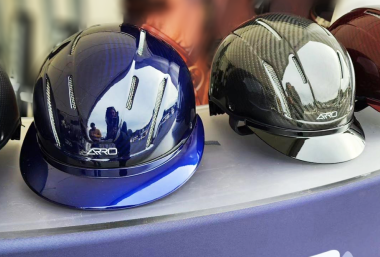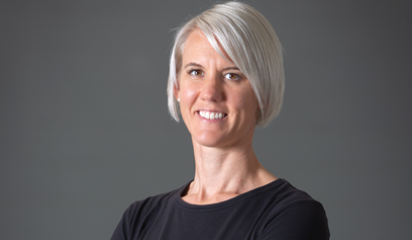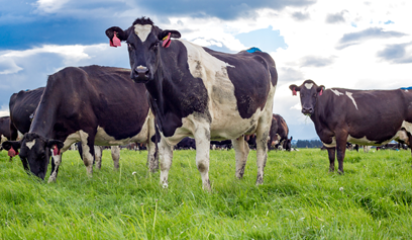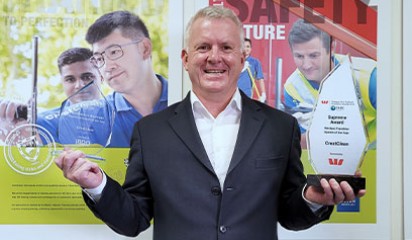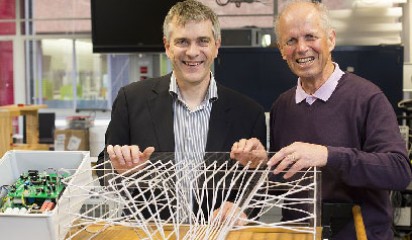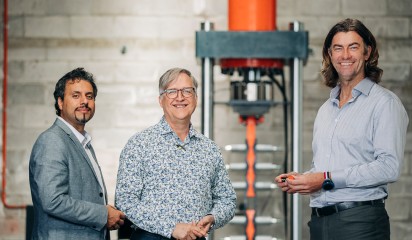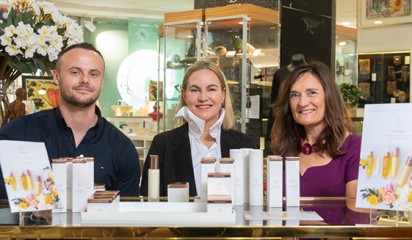Lying in hospital following a serious horse-riding accident, Rhys Powell had plenty of time to think.
It set him on a journey to create a revolutionary new riding helmet that’s now leading the world in safety standards.
In 2018, a freak horse-riding accident at his Cambridge property saw Rhys rushed to Waikato Hospital with a fractured C3 vertebrae.
"If you damage any of those C1 to C7s, they’re the ones that can put you in a wheelchair," he says.
"I was in hospital for four days. You have plenty of time to think when you’re in a brace and can’t move. And I thought, this really shouldn’t have happened to me if I’d been wearing a different helmet."
Grateful to make a full recovery, and once back on his feet, Rhys was determined to create a better helmet – one with proper coverage of the face and the neck that would provide additional protection against spinal injuries. It would be more akin to the helmets he used to wear as a teenager doing motocross.
"The helmets for motocross and downhill mountain-biking were all open-faced in the 80s but had since evolved. While horse-riding helmets hadn’t; they’d actually gone backwards."
Rhys did all the initial design himself, pulling apart all the existing helmets to see how they were made, and using a 3D printer to produce his own test designs. As well as the safety features, they had to pass "the mirror test" for style-conscious equestrians.
After several years of development – all self-funded through the two other family businesses – the first ARRO helmets went on sale in April this year.
The patent-pending design features a detachable chin bar/guard and visor. It’s the first helmet in the world to combine SNELL safety standards with MIPS technology – which as Rhys explains, is a very big deal.
"SNELL certification is really hard to get – 99% of helmets can’t pass that. But that’s the level of safety we wanted. Especially when you’re the new kid on the block, you might as well go for the best."
The brand name ARRO – an acronym for Rhys, his wife and sons (Antoinette, Ryder and Owen) – was also Rhys’ idea.
"You’ve only got space on a helmet for three or four letters, and starting with 'a' is an extra bonus, because it puts you first on the list at tradeshows…! It’s pretty cool to have that family connection as well."
Rhys was conscious about protecting his IP from the start, doing all the testing at the family’s private riding arena at home, out of the public eye. He also sought advice from AJ Park early on.
I asked around my lawyer friends about who to use, and all roads pointed back to AJ Park. They’re the go-to guys for patents in New Zealand. They really know their stuff and have been excellent to work with – fast, helpful and honest. Their guidance has been invaluable.
ARRO now has more than 20 registered or pending design rights and patents, covering various aspects of the technology and design of the helmet.
Their main target markets are the two big countries in equestrian sport – the UK and the US – as well as Australasia. They already have some big names in equestrian circles wearing their helmets, and the US and Canadian national eventing teams are interested in partnering.

When doing overseas trade shows, Rhys says he gets a lot of positive feedback – despite some initial scepticism that he invented the entire product himself.
"All the global manufacturers are coming up to me and saying, "where’s this from" and "who designed it". When I tell them it’s me, they’re surprised but also impressed."
Rhys says the past five years has been a hugely rewarding journey.
"It’s pretty cool to develop the world’s safest helmet, out of New Zealand, and take our product overseas. And for a rider to be behind it is pretty unique as well…usually it’s the big corporations."
While the business potential for ARRO is exciting, Rhys has never forgotten his personal motivation.
Our ethos is to help make the world safer. So many riders are injured in this sport, the statistics are horrendous. Some of them decide it’s too dangerous and give up their passion. We want to help give them back their confidence and safety.
Written by Libby Schultz
